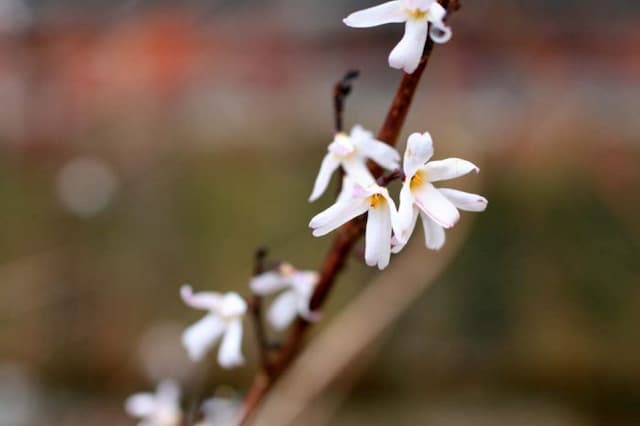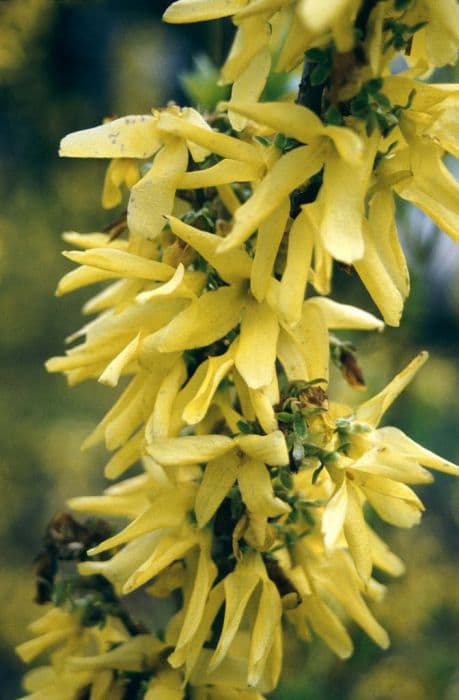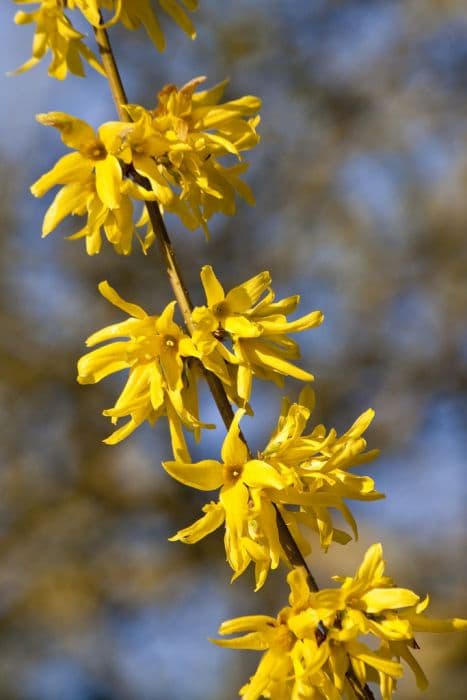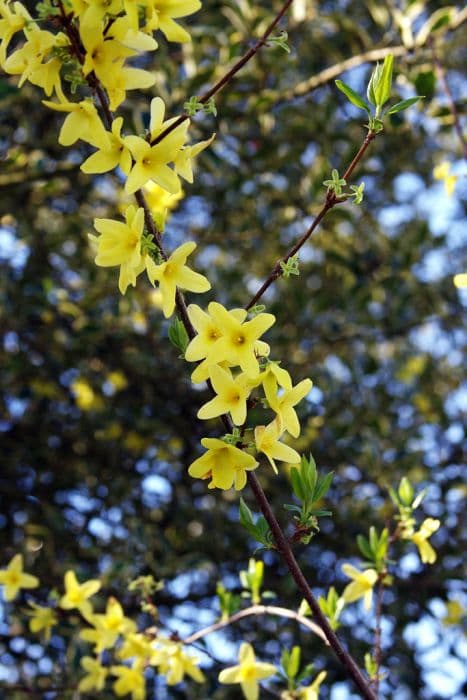Lilac Syringa vulgaris 'Katherine Havemeyer' (d)

ABOUT
The Katherine Havemeyer lilac is an ornamental plant known for its striking flowers and lush foliage. When in bloom, it boasts dense clusters of double flowers that exhibit a lovely lavender-pink color, imparting a soft yet vibrant allure to gardens and landscapes. Each flower emits a sweet and arresting fragrance, which becomes a sensorial highlight especially in the spring months when the lilacs reach peak bloom. The petals have a delicate texture that can appear almost ruffled, adding depth and richness to the flower clusters. The foliage of the Katherine Havemeyer lilac complements its splendid blooms. The leaves are heart-shaped with a slightly glossy appearance and grow densely, providing a dark green backdrop that highlights the beauty of the blossoms. When not in bloom, the foliage alone provides a lush and healthy appearance capable of maintaining interest throughout the growing season. This variety of lilac is prized for its classic aesthetic as well as the aromatic atmosphere it can create, making it a favorite among gardeners and landscape designers.
About this plant
 Names
NamesFamily
Oleaceae
Synonyms
Katherine Havemeyer Lilac, Double Lilac
Common names
Syringa vulgaris 'Katherine Havemeyer'
 Toxicity
ToxicityTo humans
The common lilac is not considered highly toxic to humans, but it may contain compounds that could cause discomfort if ingested. Symptoms of mild poisoning might include abdominal pain, vomiting, and diarrhea. It is generally advisable to avoid eating any part of ornamental plants due to potential adverse effects.
To pets
The common lilac is generally recognized as safe for pets and is not considered highly toxic. However, if a pet ingests a large amount of the plant, it could potentially experience mild gastrointestinal upset, such as vomiting or diarrhea, due to the irritation caused by plant compounds. It's always best to monitor pets and prevent them from consuming non-food plants.
 Characteristics
CharacteristicsLife cycle
Perennials
Foliage type
Deciduous
Color of leaves
Green
Flower color
Mauve
Height
10 feet (3 meters)
Spread
6 feet (1.8 meters)
Plant type
Shrub
Hardiness zones
3
Native area
Southeastern Europe
Benefits
 General Benefits
General Benefits- Aesthetic Appeal: 'Katherine Havemeyer' adds visual interest to gardens with its abundant, attractive lavender-pink flowers.
- Fragrance: The flowers emit a pleasant fragrance that can enhance the sensory experience of a garden or landscape.
- Wildlife Attraction: Blooms attract pollinators such as butterflies and bees, supporting local ecosystems.
- Shade Tolerance: Can grow well in partially shaded areas where other sun-loving flowering plants might not thrive.
- Durability: Once established, it is relatively drought-resistant and can weather periods of low rainfall without significant damage.
- Seasonal Interest: Provides a springtime display of flowers and adds interest with its green foliage throughout the growing season.
- Privacy Screening: When planted in groups or rows, it can function as an effective visual screen or hedge.
- Ease of Care: Requires minimal maintenance once established, making it suitable for gardeners of all skill levels.
- Traditional Landscaping: Often used in traditional garden designs and can contribute to a classic or historical aesthetic.
 Medical Properties
Medical PropertiesThis plant is not used for medical purposes.
 Air-purifying Qualities
Air-purifying QualitiesThis plant is not specifically known for air purifying qualities.
 Other Uses
Other Uses- Lilacs such as 'Katherine Havemeyer' can be used to create a natural dye, producing a subtle green color when used with alum as a mordant.
- The fragrant flowers of lilacs can be placed in bowls of sugar to infuse the sugar with their fragrance, which can then be used in baking.
- Lilac wood is hard and dense, making it suitable for engraving or fine woodworking projects such as inlays and small carvings.
- Artists sometimes use lilac twigs as a source of charcoal for drawing and sketching.
- In perfumery, the essence of lilac flowers is used to make soliflores or as a part of floral fragrance compositions.
- Cut lilac flowers are often placed in wardrobes or drawers to impart a fresh, floral scent to clothing and linens.
- Lilacs can be used in homemade potpourris, blending their dried flowers with other herbs and spices to create home fragrances.
- The hollow stems of lilac branches can be used in creative ways such as making natural straws for sipping cool drinks.
- When dried and pressed, lilac blooms can be incorporated into paper making, to create decorative handmade papers.
- The dense foliage of lilacs provides shelter and nesting sites for small birds in the garden.
Interesting Facts
 Feng Shui
Feng ShuiThe common Lilac is not used in Feng Shui practice.
 Zodiac Sign Compitability
Zodiac Sign CompitabilityThe common Lilac is not used in astrology practice.
 Plant Symbolism
Plant Symbolism- Love: The common name for Syringa vulgaris 'Katherine Havemeyer' is Lilac, and the Lilac flower often symbolizes love and affection, reflecting the emotional bonds between people.
- Innocence: Lilacs are also seen as a symbol of innocence, stemming from their delicate and ephemeral early spring blooms.
- Youthful Enthusiasm: The vibrant blooms and the time of year they appear, symbolize the enthusiasm and vigor associated with youth.
- Renewal: As lilacs are among the first flowers to bloom in the spring, they are often associated with rebirth and new beginnings.
- Nostalgia and Remembrance: Lilacs can evoke feelings of nostalgia due to their historical use in gardens and their noticeable fragrance, which can trigger memories.
 Water
WaterThe common lilac, or Syringa vulgaris 'Katherine Havemeyer', should be watered thoroughly to saturate the root zone, then allowed to dry slightly before the next watering. For established plants, watering deeply once a week is generally sufficient, but during periods of extreme heat or drought, the frequency may need to increase to twice per week. On average, giving the plant about 1 gallon of water per square yard of soil each time should be adequate. Young plants may require more frequent watering as they establish—possibly every other day. Use a soaker hose or drip irrigation system to apply water directly to the base of the plant rather than overhead watering to minimize wetting the foliage.
 Light
LightThe common lilac requires full sun to bloom profusely, so it's best planted in a location where it receives at least 6 hours of direct sunlight daily. Partial shade is tolerated but may result in fewer flowers. An ideal spot is one that is sheltered from strong winds, which can damage the blooms.
 Temperature
TemperatureCommon lilacs prefer cooler climates and are hardy in USDA zones 3 through 7. They can typically withstand winter temperatures as low as -40°F and summer temperatures up to 95°F. However, they thrive best when the temperature ranges from 60°F to 75°F during the growing season. High summer heat can be stressful, particularly in southern zones.
 Pruning
PruningPrune common lilacs immediately after their blooming period in late spring to shape the bush and remove spent blooms, which encourages the plant to produce more flowers the following year. Cut back no more than one-third of the growth, focusing on older stems to make room for new growth. Pruning every year or every other year is sufficient for maintaining a healthy and aesthetically pleasing shrub.
 Cleaning
CleaningNot needed
 Soil
SoilThe common lilac (Syringa vulgaris 'Katherine Havemeyer') thrives in well-draining, fertile, loamy soil with a pH of 6.5 to 7. A good mix for this lilac would be two parts loam, one part peat moss, and one part perlite or sand to ensure proper drainage.
 Repotting
RepottingLilacs, including the common lilac 'Katherine Havemeyer', planted in containers should be repotted every 3-4 years to replenish the soil and provide room for growth.
 Humidity & Misting
Humidity & MistingCommon lilacs like 'Katherine Havemeyer' are tolerant of various humidity levels and do not require high humidity; average outdoor conditions are usually sufficient.
 Suitable locations
Suitable locationsIndoor
Provide bright light and cool conditions for indoor common lilac.
Outdoor
Plant in full sun, well-drained soil; water and mulch regularly.
Hardiness zone
3-7 USDA
 Life cycle
Life cycleThe common name for Syringa vulgaris 'Katherine Havemeyer' is the lilac. The life cycle begins with seed germination, requiring a period of cold stratification to break dormancy. The seed grows into a seedling, which gradually develops into a young plant with a strong root system and foliage. As the lilac matures, it enters the flowering stage in spring, producing fragrant lavender-pink blossoms that attract pollinators. Following pollination, the flowers develop into brown capsules that contain seeds, ready to disperse and begin the cycle anew. Over several years, the lilac reaches maturity, where it can maintain its growth and reproductive cycle for decades with proper care.
 Propogation
PropogationPropogation time
Spring to summer
Propogation: The Syringa vulgaris 'Katherine Havemeyer', commonly known as the Lilac, is often propagated through softwood cuttings. This method is generally done in late spring or early summer when new growth is still supple. To propagate lilacs by softwood cuttings, one takes a 4 to 6-inch cutting from a healthy, new shoot, making sure there are at least a couple of leaf nodes present. The bottom leaves are removed, and the cut end is dipped in rooting hormone before planting the cutting in a moist potting mix. To maintain humidity, the pot can be covered with a plastic bag or placed in a propagator. It usually takes several weeks for roots to form, after which the new lilac plant can be gradually acclimated to outdoor conditions before planting in its final position.








